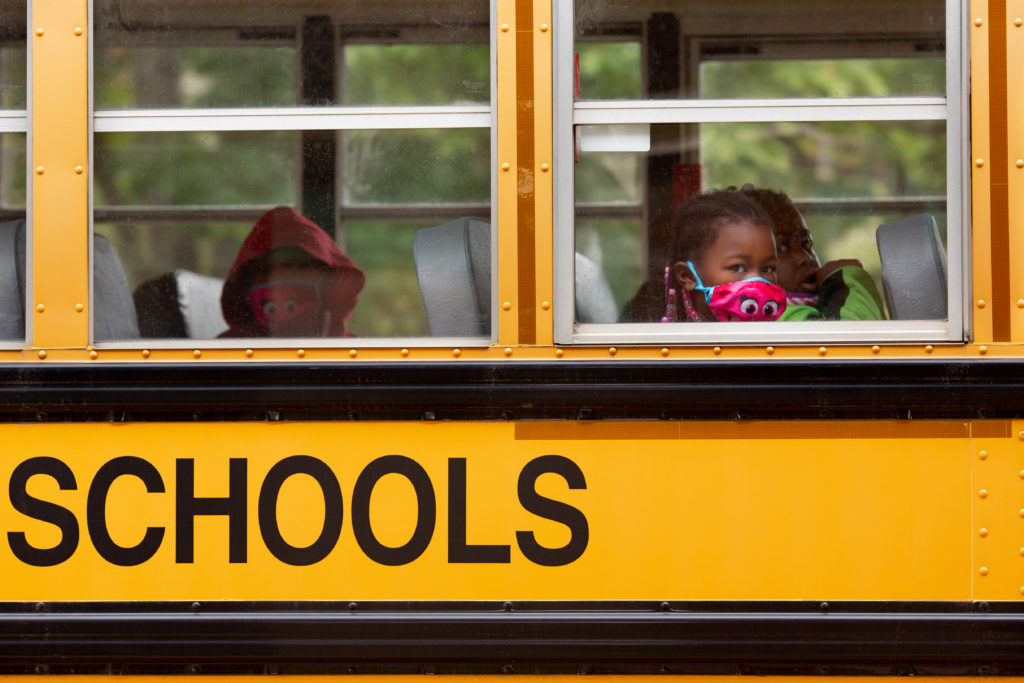

April 23, 2021
As large vaccine distribution continues throughout the United States, many school districts have begun to reopen their doors for traditional, in-person, learning. However, as schools prepare to open, families of color believe the risks of returning to schools are too high. Studies find that parents of color consistently prefer remote-only instruction methods, with gaps between white parents and parents of color ranging from 15-30 percentage points between November 2020 and March 2021. This trend has been seen throughout the country. In New York, nearly 12,000 more white students returned to in-person, public instruction, than Black students — even though there are more Black students than white students in the schooling system overall. Similarly, Chicago public school systems are witnessing racial disparities within in-person learning attendance rates.
A core concern for students and families of color is that they are at greater risk of COVID-19 complications. Adjusted for age, African American, Latinx, and Indigenous individuals are more likely to have died from COVID-19 than white Americans. Communities of color are also less likely to be able to manage the financial externalities of the pandemic. The US Bureau of Labor Statistics has found that communities of color are overrepresented in the service industry, thus putting them at an increased risk of job loss if they contract the virus. Students possibly contracting COVID-19 and returning home to their families, put them at a greater risk of death and economic insecurity.
Not only are communities of color at greater risk of death due to exposure, and more at risk from the financial implications of the virus, due to housing traditions they are also more likely to put elderly family members at risk of contracting the disease. Intergenerational living, where households have elderly family members living with school age children, is more common among Black, Hispanic, and Asian families. Families are weary of students contracting the disease in school and spreading COVID-19 to elderly family members. While vaccinations may alleviate some of these concerns for elderly family members, vaccination rates have lagged in communities of color across the country. These concerns have resulted in a perfect storm – increasing the anxiety and discomfit of parents returning their students to in person schooling during reopening.
Return reluctance among families of color threatens to wide achievement gaps if the appropriate systems are not put in place to support students. The shutdown has spotlighted the importance of school communities in the lives of America’s most vulnerable students. Nearly 100,000 schools provide lunch to more than 29 million students each day. Students of color (Black, Hispanic, Asian and Pacific Islander, and students who are two or more races) represent 50 percent of the eligible population for free or reduced lunch in schools. Hesitancy to return to school buildings prevents many students in food insecure households from accessing a source of daily meals.
The reluctance also threatens to prevent students from having access to high quality in person learning. Virtual learning has prevented families of students with disabilities from accessing their Individualized Education Programs (IEPs) that are vital for their child’s learning and emotional growth. In 2016, 12 percent, 16 percent, 9.5 percent, and four percent, respectively, of Black, Indigenous, Hispanic, and Asian students received special education services. The school shutdown and challenges with virtual learning have further marginalized these students of color during their educational experiences.
Students of color without a disability have also reported increased challenges with virtual instruction. Students benefit the most from a high quality in person instructor because they are better able to forge relationships with students and support their instructional or mental health needs. Without returning to a qualified in-person instructor students of color are at an increased risk of falling behind their white peers especially if those students return to the classroom and receive the benefit of in-person instruction. The in-person versus virtual dynamic for white students and students of color could perpetuate already existing achievement gaps and experts are concerned the pandemic may create a lost generation of young people.
School and school districts want to prevent students from contracting COVID-19 and encourage families of color to send their child back to in-person instruction. Return reluctance will impact the educational outcomes of students and cause increased administrative and legal challenges for districts serving families of students with disabilities. The following policy considerations should be discussed to help schools and school districts encourage families of color to send their students back to the classroom when it is safe to do so.
Make transitions safe (hybrid options) | Schools and school districts can create hybrid school return options to ensure students receive quality in person instruction and families can express their personal safety preferences. Hybrid learning options and making safe transitions back to in person learning often happen in stages. Students are given the option to return to in person instruction based on their grade level or they are sorted into streams to lower the risk of COVID-19 infection. Increasing the types of transitions back into the classroom for students will allow parents to ensure the safety of their children before making the decision to go back to fully in person instruction. Ann Arbor Public Schools is a district with more than 17,000 students (49 percent of which are students of color), and implemented hybrid learning this spring to “maintain the priority of health and safety for our students, staff, and community as we continue to monitor this ongoing situation.”
Communicate with families the measure being taken to keep students safe | Without school leaders sharing their plans for school reopening, return reluctancy for families of color will continue due to misinformation on what the school has put into place to protect student health. Targeted outreach must be made to families of color by school and school district leaders to keep them up to date on reopening plans. School leaders must design and share their plans for school testing, vaccination, and hybrid instruction now so families of color can make an informed decision about whether to have their child return to in person instruction. Return reluctance can dissipate if families of color have trust in their school’s plans for reopening and protecting student health.

Elementary students wait to exit their bus before school starts for the day. Photo by Allison Shelley for EDUimages.